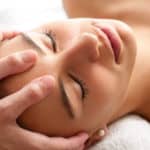 Want to earn continuing education credit for this article? Learn more.
Want to earn continuing education credit for this article? Learn more.
Statistics show that one out of every three U.S. adults will experience arthritis as they grow older. Researchers at Beth Israel Deaconess Medical Center (BIDMC), an affiliate of Harvard Medical School, have found that baby boomers have significantly higher rates of arthritis than their parents’ generation. “Baby boomers are just approaching the age when arthritis rates begin to rise dramatically. Many baby-boomers have lived with obesity for much of their lives. We can expect to see the health and functional consequences of this epidemic in the coming decades,” says Suzanne Leveille, PhD, senior author of this BIDMC study.
Caused by the deterioration of joint cartilage, osteoarthritis is the most common type of arthritis resulting in pain, swelling, and decreased range of motion. Repetitive stress injuries and excess body weight are considered two of the most avoidable causes of osteoarthritis. Also known as degenerative joint disease, osteoarthritis causes the cartilage cushioning the surfaces of bones to wear out, causing crepitation, or the grinding of bones against each other. As a result of using our hands for nearly every daily task, osteoarthritis of the hands is among the most prevalent sources of discomfort for baby boomers.
While medications such as Non-Steroidal Anti-Inflammatory Drugs (NSAIDS) have been the primary choice in treating osteoarthritis, their accompanying side effects and limited benefit often makes these medications less than desirable. According to the Arthritis Foundation, an increasing number of doctors are recommending massage to their arthritis patients for pain and stiffness relief. In addition to bodywork, heat-based therapies and detoxification protocols are exhibiting exciting results in reducing arthritic complaints.
One Heat-Based Therapy
For many years, paraffin wax has been used as a health treatment due to its effectiveness in transferring heat to the skin and joints. Warmed paraffin wax dips expand blood vessels which serves the following therapeutic functions:
- Increases circulation
- Draws nutrients to the skin’s surface
- Flushes toxins out of the skin
Paraffin wax’s very high heat capacity is a unique characteristic enabling absorption and retention of a great amount of heat. When used on the hands, the heat required to melt the wax is released after it solidifies into a custom-fitted, warm glove. This glove transfers the heat deep into the hand.
A 2006 Cochrane review reported positive results for paraffin wax baths for arthritic hands. When comparing various heat therapies, researchers concluded that paraffin wax treatment was especially helpful for arthritic hands on objective measures of range of motion, pinch function, grip strength, pain on non-resisted motion and stiffness compared to control (no treatment) after four consecutive weeks of treatment.
One Detoxification Solution
Elimination of toxins is an important avenue for realigning arthritic clients with their health. Toxins can accumulate and crystallize throughout the body in various tissues including:
- Blood
- Nerves
- Fascia
- Muscles
- Joints
This accumulation creates toxic congestion, lending the body susceptible to arthritis. As the body’s primary vehicle for waste elimination is the digestive tract, taking a detoxification supplement can have a profound effect on preventing and reversing toxic waste stagnation. Liv.52 is an ideal example of a supplement designed for body detoxification, and can be a valuable addition to an arthritic client’s repertoire.
While pharmaceuticals have real, but limited ability to help the millions of arthritis sufferers in the world, alternative therapies are showing increasing promise. Without the side effects associated with NSAIDS or other medications, treatments such as massage therapy, paraffin wax dips and detoxification supplementation are forging ahead of conventional treatment in bringing baby boomers the relief they need for painful, arthritic hands.
Editor’s Note: This information is for educational purposes only. As laws differ between occupations and locations, therapists are advised to operate solely within their scope of practice.
Earn continuing education credit for this article contained in our Arthritic Conditions & Massage series. Click here to enroll.















